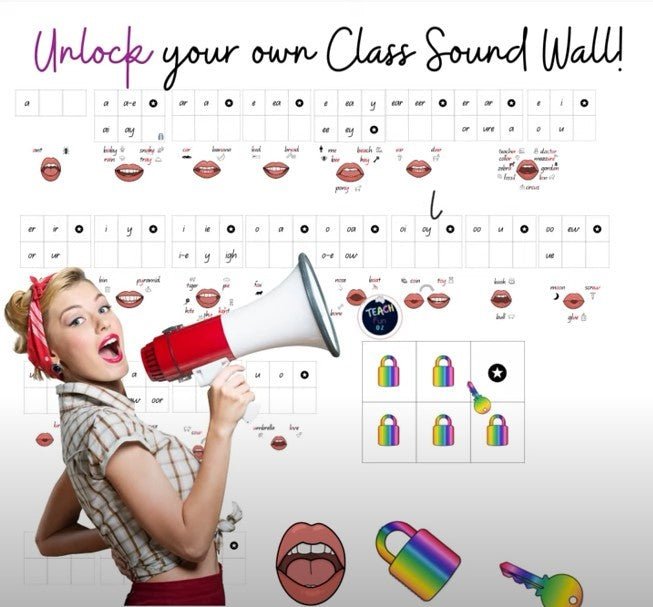
Unlock your own class Sound Wall - What is a Sound Wall you ask?
A modern teaching trend at the moment is a 'Sound Wall'. However, this concept is not necessarily totally 'new' to classrooms. For decades, teachers have been using various programs and visual aids for teaching phonemes and graphemes. These days these boards have seen some great additions to them, such as sound groupings, mouth articulation images and little locks to cover over sounds until they are gradually taught throughout the year. The Sound Wall is a research-based strategy known as the Science of Reading and focuses on Phonemic Awareness - Sounds - Speech - Reading - Spelling. You can find a Sound Wall reading to start implementing into your classroom right HERE. Check out the short video below which shows what a Sound Wall is and how it can be used in the classroom.
What is a Sound Wall? A Sound Wall involves research based explicit teaching of the 44 Speech Sounds of the English language . It is just what you need in your classroom to set up for phonemic awareness, recognising graphemes, learning about digraphs, trigraphs, quadgraphs, speech articulation with mouth pictures, nasals, stops, fricatives, affricates, glides, liquids, voiced, unvoiced, sound segmenting and more.
Sound Walls can be effective for many uses, various levels and ages. They can be used for whole class explicit literacy teaching and modelling, small group instruction, as an independent reference for students when writing and spelling, for speech language pathology, special education and tutoring. The clear mouth, lips, tongue and teeth positioning pictures are very helpful alongside their corresponding phonemes. Instructions can include what each kind of sound is and whether they are voiced or unvoiced. Sound Walls support the science of reading with a whole part whole approach and phoneme to grapheme correspondence. According to the Science of Reading, students need to master phonemic awareness skills before they match the sound to print, and phonics instruction is needed before students begin decoding text.

Leave a comment